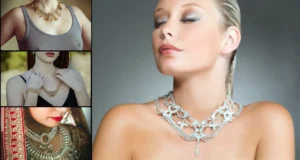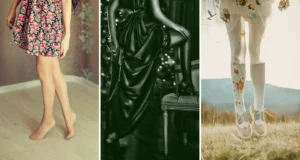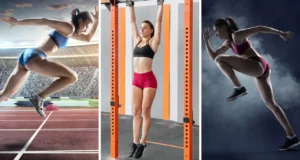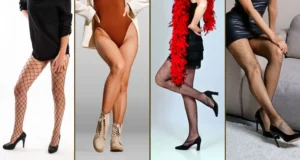As you watch the Irish dancers perform, the dance floor is alive with whirling colors. Their short dresses twirl around athletic limbs, interpreting complicated routines through the fabric as much as footwork. But what makes these vibrant costumes so iconic?
Tradition offers part of the answer. Irish dance has evolved for centuries, with attire adapting alongside. Long skirts, once common, now hinder rapid steps. Meanwhile, cultural shifts loosened rigid past styles.
Practicality also speaks volumes. Intricate leg work demands free-flowing dress, too. Sudden spins and leaps stay fluidly on beat solely through short hems.
Appeal plays its role, too. Close-cut dresses flatter dancers’ fit figures, attracting admiring eyes toward accomplishments rather than appearances. Energetic shows deserve attractive packaging, after all.
While individuality allows personal picks, this trio of tradition, practicality, and appeal recurrently inspires short dress codes. So take a moment to appreciate more than footwork under the next whirl of colorful costumes stealing the stage.
Why do Irish female dancers wear short dresses?
Ease of movement and showcasing intricate footwork
Irish dancing requires lots of intricate footwork and fast movements. That’s why the dresses are short. Short dresses let the dancers move freely without restrictions. Thanks to the short length, they can kick their legs high and spin quickly.
The dresses also show off the dancers’ skills. You can see each step and jump clearly because nothing covers the legs. It looks really impressive when the dancers move at lightning speed, yet everything is so precise. Their talent is on full display for all to enjoy.
Besides being practical, short dresses accentuate the form too. The dancers’ posture and lines look graceful as they glide across the stage. It makes their performance very pleasing to watch. Though some dancers may prefer longer outfits, many embrace the short dress as it empowers their art.
The costumes nowadays are beautiful creations with colourful patterns. The designs often include delicate Celtic knots or sparkly embellishments. These dresses beautifully complement the dancers without restricting their ability to perform complex routines. Whether traditional or modern, the costumes accentuate hard work and celebrate Irish culture.
In the end, allowing complete freedom of movement is important for Irish dancing. The short dresses allow intricate footwork to shine through without extra material getting in the way. Both dancing ability and aesthetic beauty can be appreciated as a result.
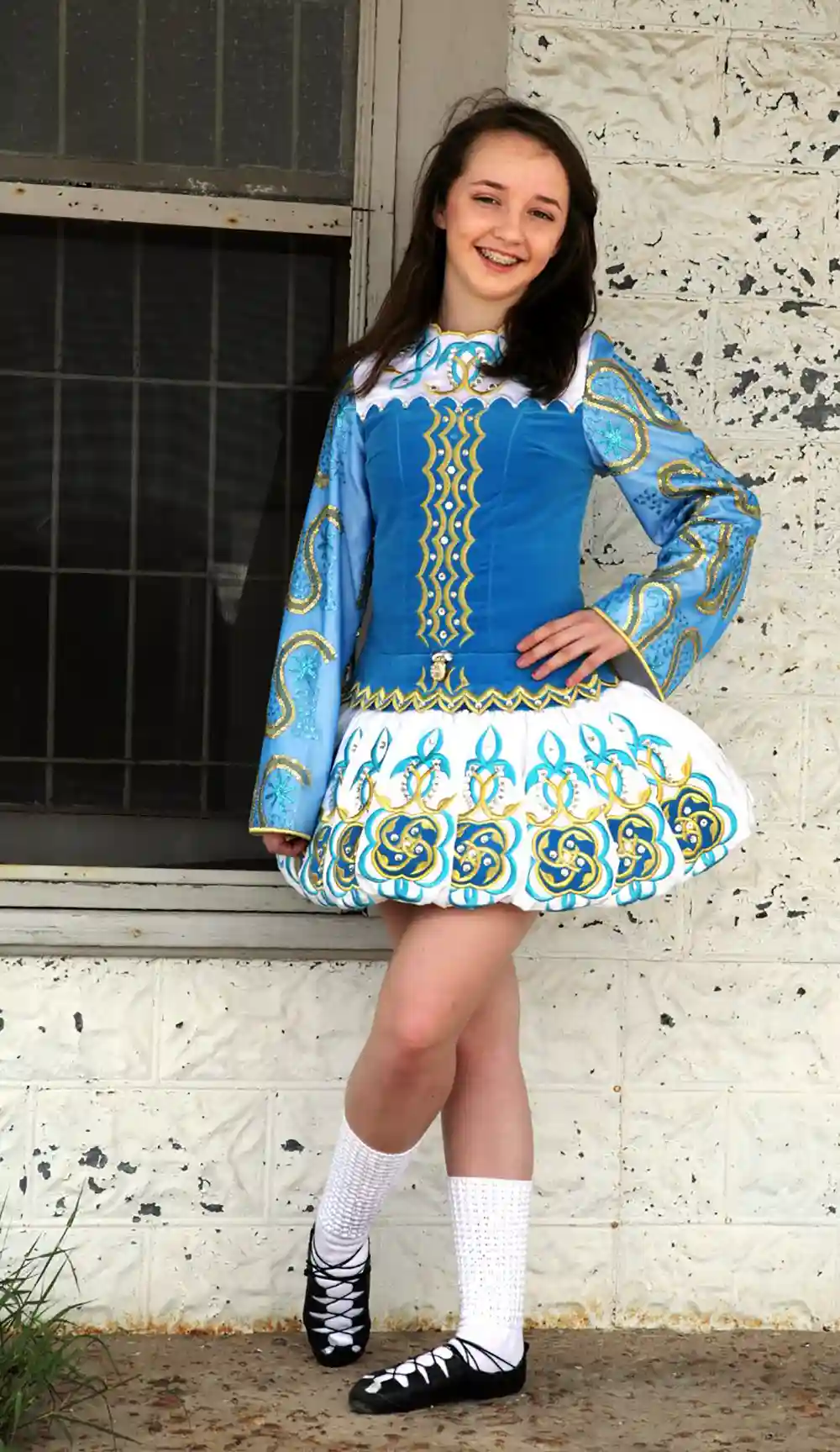
Traditional costume and cultural heritage
Irish dance costumes have a long history. In the early 1900s, short dresses became popular for dancers. These dresses help represent their culture and traditions.
By wearing short dresses, dancers are able to honor their roots. Their outfits connect them to past dancers from Ireland. It’s like they’re celebrating where Irish dance began. The designs on the dresses use old Celtic patterns, too. These help tell the story of Ireland’s past.
The form-fitting look lets the dancers move freely as they perform fast steps. But it’s more than just being practical – it feels powerful. When you wear one of these dresses, you feel proud of your heritage with each twist and kick. It’s a way for dancers to embrace their Irish culture.
Nowadays, dresses come in modern styles too. They feature bright colors and sparkly embellishments. But both traditional and contemporary dresses let talents shine through energetic routines. No matter the design, these outfits show respect for those before who helped make Irish dance what it is today.
While some dancers may dress differently, many love representing their roots in short dresses. It’s a chance to honor history during performances. You pay tribute to tradition and connect to other past and present dancers when you wear one.
Practicality and agility for fast-paced and energetic dance
Irish dancing is fast and energetic, so the dresses need to allow for lots of movement. Short dresses really help with this. With a short skirt, you can move your legs quickly and kick high without anything getting in the way.
All those fancy steps are no problem when you’re wearing a dress that doesn’t slow you down. You can spin around fast and do all the complicated footwork. Nothing holds you back from showcasing your talents.
The shorter dress also lets the audience see everything you’re doing clearly. With the legs on full display, it’s really impressive to watch someone dance at lightning speed yet do everything with such skill. No trick is missed!
As well as being practical, the short dress also flatters the dancer. The form-fitting style accentuates your posture and lines in a graceful way. It highlights how light on your feet you are while dancing across the stage.
Nowadays, dresses come in bright, fun colors, too. Along with sparkly details that catch the eye. So whether traditional or modern, you can dance freely while looking great too. Your hard work and the culture are celebrated.
Aesthetics and accentuating form and movements
The short dresses are really designed to show off the dancer’s skills. With the tight fit of the bodice and short skirt, every move looks elegant and graceful. Your posture and lines are highlighted as you float across the stage.
Being able to see the legs is also important. That’s where so much of the dance happens through kicks and steps. The short dress puts this on full display. The audience gets to appreciate just how athletic yet precise your dance is.
Not only does it look great, but it probably feels great, too. Wearing a dress that flatters your figure must give you the confidence to perform at your best. All your hard work pays off, looking so stylish under the lights.
Some folks think it’s only practical, but there’s a real art to the design. Traditional dresses had lovely Celtic patterns that told stories. Now, you see bold colors and sparkles that still capture the eyes. Your talent shines through in beautiful outfits as well.
So, in the end, the short dress has many benefits. It lets you move freely while showing off an impressive, mesmerizing routine for others to enjoy.
Evolution of costumes from traditional Celtic designs
Irish dance costumes have come a long way from traditional Celtic styles. In the past, dancers wore long dresses with simple fabrics and Celtic knot designs. These outfits worked for slower group dances but not today’s fast solos.
As dancing got more athletic, lighter costumes were needed. Designs now use stretchy materials instead of heavy velvet. Patterns became detailed with knotwork and sparkles too. Patterns still pay tribute to past traditions, though.
While long dresses were beautiful, they just didn’t allow the big kicks and spins of modern dancing. The short design lets you move freely across the floor. Every step is visible for audiences to appreciate your talent.
Traditional inspiration mixes with modern updates. Designers create elegant dresses that are perfect for showcasing skilled routines. Simple or intricate, costumes celebrate rich Irish heritage through dance.
Your passion shines through, whether in a traditional long gown or fitted short dress. The evolution lets dancing advance while maintaining cultural pride. So the costumes evolved right along with the fancy footwork!
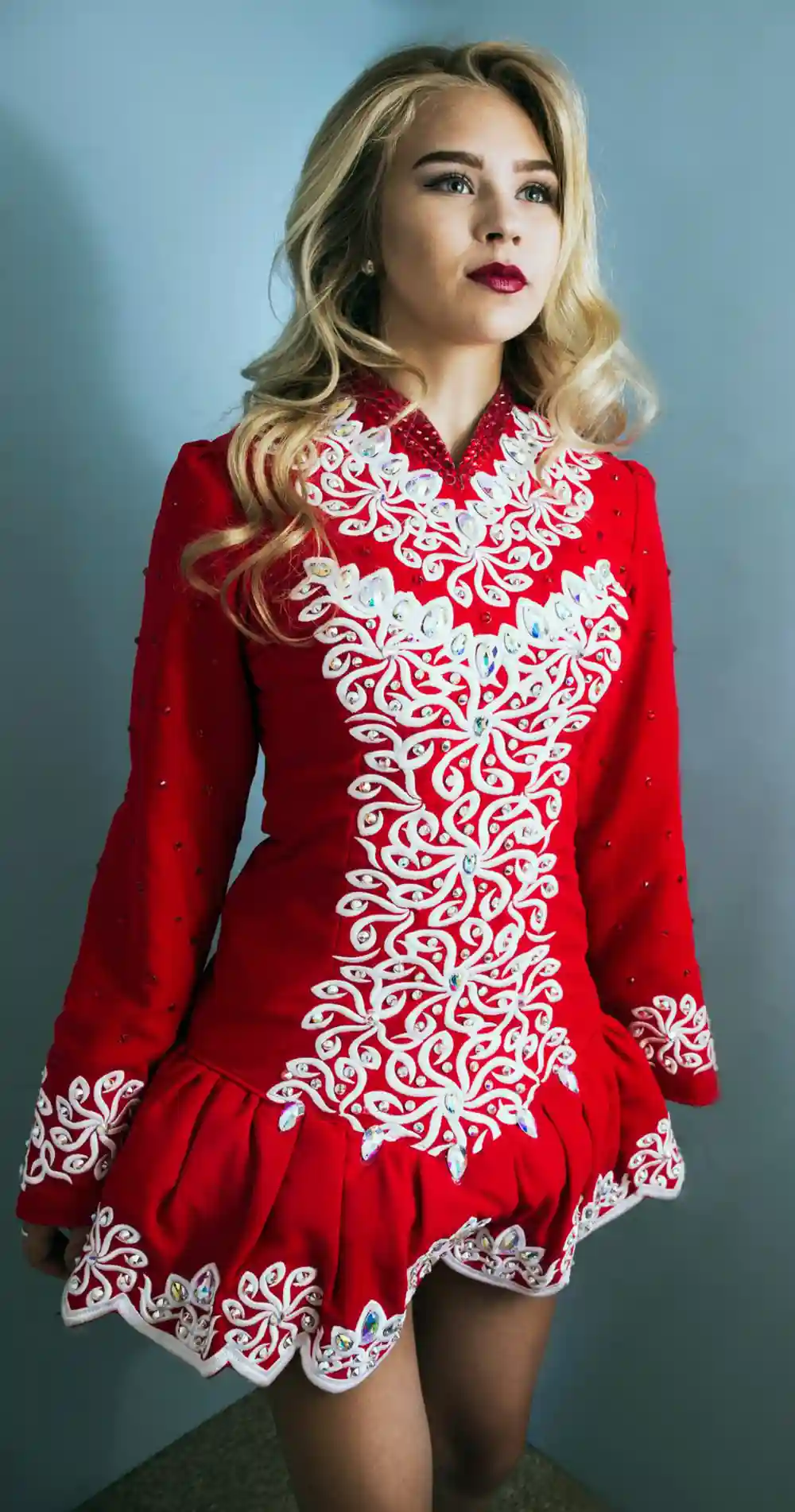
Enhanced visual appeal and lightness
You want the audience’s eyes on you when you’re dancing up on stage. The short dresses help with that because they convey a sense of lightness and flow. As you spin and step, the dress moves right along with you.
It’s like the dresses become an extension of your dance. Every flick of the leg or twirl of the body is echoed by the flowing fabric. The shorter length lets viewers see all the fancy footwork too. Between the drama of the movements and flashy costumes, people can’t look away!
There’s an elegance and allure to wearing a dress that highlights your abilities. Spinning in short layers of fabric probably makes you feel like a natural performer. The clothes are designed not just for function but for a stunning visual effect as well.
The materials are lightweight too, so you stay cool under bright lights. Whether traditional designs or modern styles, the outfits allow you to execute difficult routines comfortably. It’s easy to captivate audiences when you feel confident and look incredible!
So, in the end, the short dresses serve dancers both practically and visually well. Your talent shines through energetic dancing and eye-catching costumes that immerse viewers in the thrilling show.
Affordability and accessibility compared to long gowns
Cost is really important when pursuing any hobby or art form. Long Irish dance dresses can apparently cost up to $1000, which is way too much for many. Short dresses are much more affordable since they use less fabric.
Some dancers even make their own short dresses to save serious money. As long as it looks nice and lets you move freely, what more do you need? Living within a budget is realistic.
Dance is supposed to be accessible no matter your background. Short dresses help make that true by staying cheap enough for all. Nobody should be excluded from cultural traditions just because they can’t afford an expensive costume.
Creativity with hand-sewn designs or found fabrics is another cool way to reduce costs. Art doesn’t need fancy stores – passion is what matters most. As long as you love to dance, that’s richer than any price tag ever could be.
Affordable dresses mean more people like you can experience all that Irish dance offers. That keeps the traditions alive for generations to come.
Modesty through high necks, long sleeves, and opaque tights
It’s important for Irish dance costumes to strike a good balance. The dresses need to show off tricky dance moves while still being respectful. That’s why high necks, long sleeves, and tights are part of the design.
Covering the chest and shoulders, as does having tights on the legs, keeps things modest. Adjudicators can ask you to add tights if a skirt looks too short too. These rules make sure dances focus on talent, not appearance.
There are also guidelines for skirt length and necklines. Everything must fall at a decent length so cultural values are maintained. Dancing is a respected art, so presentation matters.
Dancers understand showing respect for their bodies by how they dress. Performing for others means being appropriate too. The costume style honors traditions while skill shines through unrestricted movement too.
So, in the end, the short dress, along with extra layers, allows comfortability and modesty. Cultural pride comes across through dignified dress just as much as the dance. It’s a nice balance.
Displaying dance technique and skill for judges
When you compete in Irish dance, the judges must see exactly what you’re doing. They look for precise footwork and perfect synchronization between your arms and legs. But with a long skirt, it’s hard to notice the small details.
That’s why having a short dress is important. The judges can clearly see how you place your feet on the clean lines of each step. Even fast kicks are visible. They get to appreciate your technical skills this way properly.
Precision is key in dance, so showcasing synchronized body control matters. A short skirt lets them determine elegant posture and control during tricky routines.
You want your talent to shine for judges. Not having fabric cover crucial areas helps them analyze skills correctly. This way, the best dancers stand out based on ability rather than being hidden beneath long dresses.
At the end of the day, short competition attire benefits you. It lets experts recognize dedication through visible mastery of tradition. Your hard work gets highlighted the way it deserves.
Evolution of costumes from military-inspired attire
Irish dance costumes have changed a lot over the years. They used to look more like military uniforms since dance started with soldiers long ago. Those old dresses had stuffy blouses and long skirts.
After World War 2, things started loosening up. Dancing turned more cultural than for the military. Skirts got shorter and took on flowy fabric instead of old army styles. This let outfits reflect a modern era where women’s roles grew too.
The short dresses we see now really let you cut loose compared to long skirts from back in the day. Tight athletic moves wouldn’t be possible otherwise. Changes in fashion also made shorter cuts the norm that dance followed.
It’s cool how costumes evolved with cultural shifts. From stiff uniforms to flowy dresses that compliment fluid movement across the floor. The transformation shows how art grows right along with its surrounding world.
Tradition gets kept too, by keeping motifs like Celtic symbols. But designs breathe new life through refreshed silhouettes that are more flattering for performance skills. Dance endures by adjusting to each new generation.
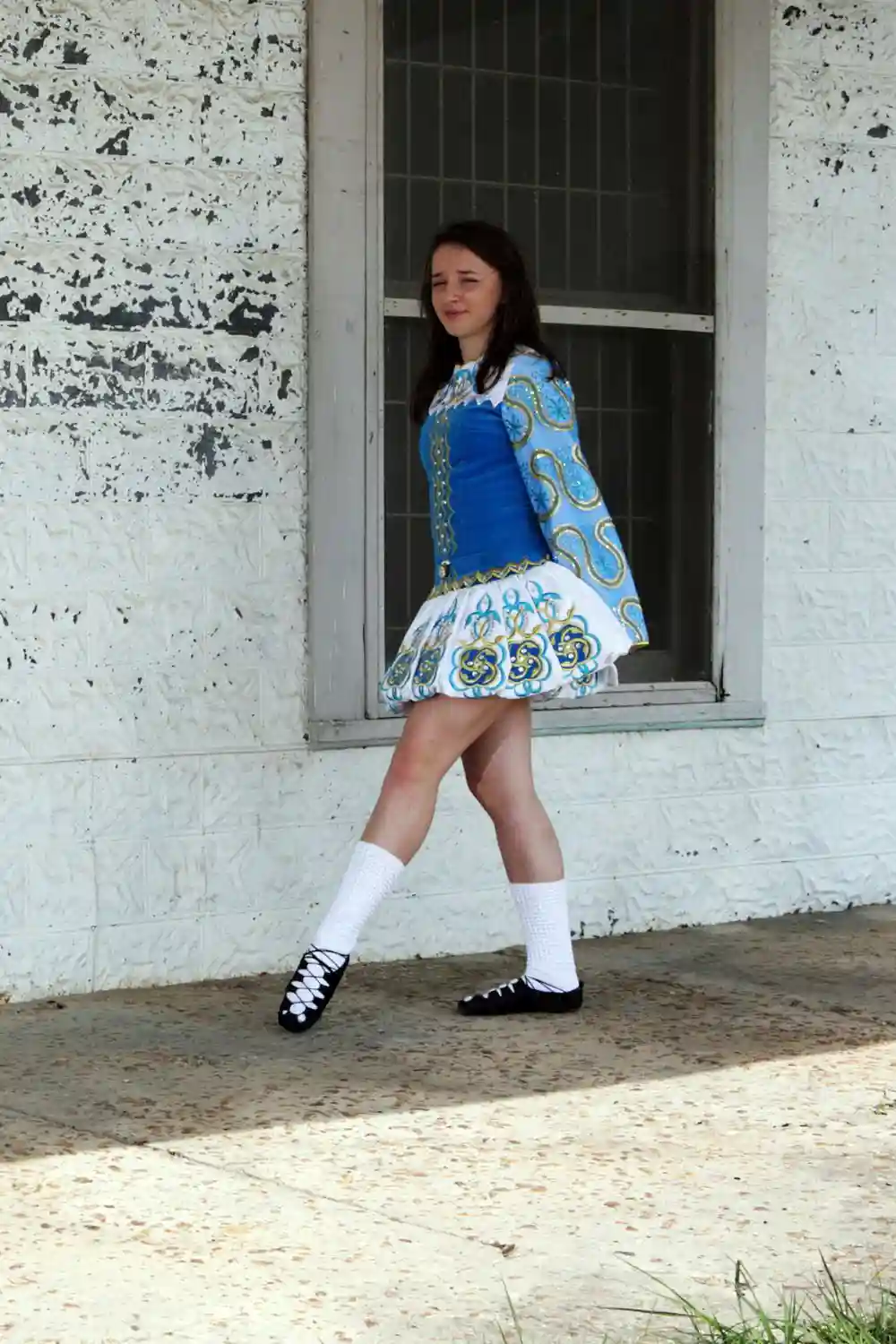
Summary
Whether honoring traditions or impressing judges, short Irish dance dresses serve dancers well. Their modern routes began as costumes loosened from stiff military styles into flowy fabrics, allowing greater mobility. Today’s revitalized designs continue to encourage agility through cultural evolution.
Accessibility remains ensured too, as shorter lengths use less fabric at lower costs than long gowns. Creativity helps through handmade versions, keeping dance open regardless of background. Modesty also stays intact alongside flexibility, balanced by complementary necklines and tights.
Judges clearly see dancing details in competition, from precise footwork to synchronized form. Audiences marvel at lightning feats underneath fluttering colors and sparkles, too. Lightweight materials let skills shine in displays of strength, stamina, and artistic expression.
Evolution forever connects past and present through style representations. Traditional Gaelic patterns immerse performers in cultural pride with each step. You powerfully embrace Irish heritage clad in such a vibrant legacy. No wonder these iconic costumes effectively accentuate talents for all to appreciate and remember.
FAQ
Why do Irish dancers wear solo dresses?
Irish dancers specifically wear solo dresses for competitions. They are usually more elegant and decorated than standard practice dresses to showcase the dancer’s skills. Solo dresses also allow the precise movements of Irish dance to be clearly seen by judges for accurate scoring.
How long should an Irish dance dress be?
Traditional Irish dance dresses for girls and women are usually short, ending at or just below the knees. This length allows for maximum movement and visibility of intricate footwork. The overall costume should be no longer than mid-calf, including shoes, tights, and sometimes a skirt.
What are two things that female Irish dancers wear?
Two things female Irish dancers typically wear are a dress and tights. The dress is usually a fitted, sleeved garment ending at the knees. Opaque tights covering the legs are also worn to maintain modesty while dancing.
Why do Irish dancers wear what they wear?
Irish dance costumes have evolved over time but still aim to allow dancers freedom of movement while representing cultural traditions. The fitted dresses and sometimes skirt/tie combinations are meant to clearly showcase complex dance techniques while maintaining modestly according to traditional standards.
What is the culture is Irish dance?
Irish dance is deeply rooted in Irish culture and storytelling tradition. The dances often depict events from Irish folklore or celebrate significant people and places through movements, music, and colorful costumes, Irish dance preserves and shares important aspects of Irish cultural heritage.
